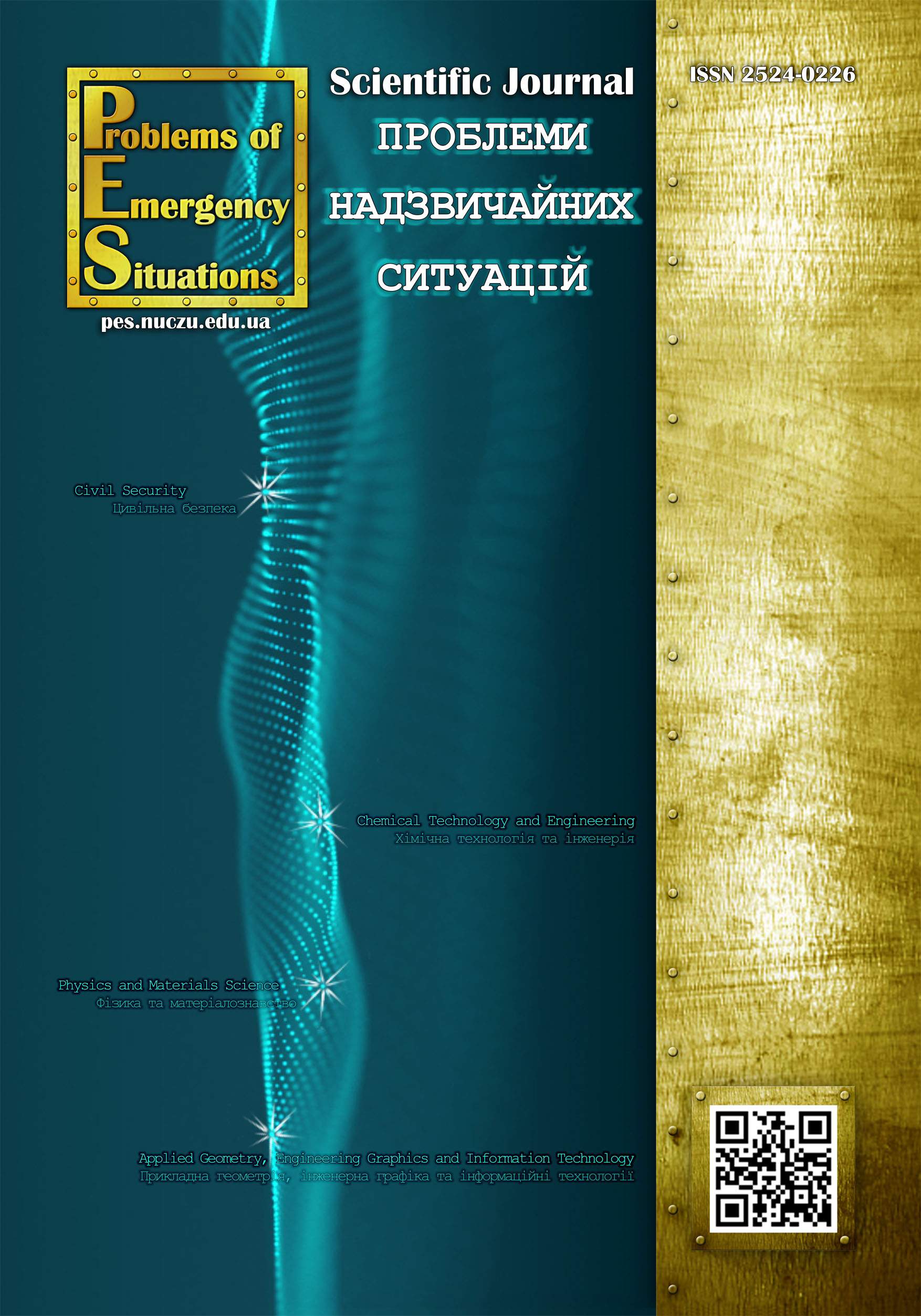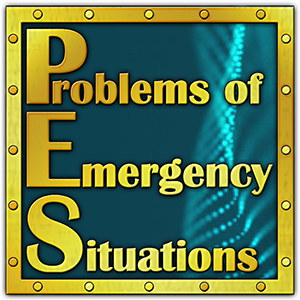Kovalev Olexander
National University of Civil Protection of Ukraine
https://orcid.org/0000-0002-4974-5201
Yadchenko Dmytro
Department for the Organization of Work and Use of
Unmanned Systems and Robotics of the State Emergency
Service of Ukraine
http://orcid.org/0000-0002-6451-7338
Melnychenko Andrii
National University of Civil Protection of Ukraine
https://orcid.org/0000-0002-7229-6926
Sobyna Vitaliy
National University of Civil Protection of Ukraine
https://orcid.org/0000-0001-6908-8037
Taraduda Dmytro
National University of Civil Protection of Ukraine
https://orcid.org/0000-0001-9167-0058
Panchenko Olexander
National Academy of the National Guard of Ukraine
https://orcid.org/0009-0009-7727-3035
DOI: https://doi.org/10.52363/2524-0226-2024-40-14
Keywords: mathematical model, optoelectronic systems, point target, payload operator
Аnnotation
The paper develops a mathematical model of the probability of detecting a point target by an operator of an optoelectronic device installed on an unmanned aerial vehicle using the Johnson criterion and the binomial law of repeated trials. The purpose of the study is to assess the probability of detecting a target using a sensor system under various external factors. The study considers the impact of various conditions, such as lighting, weather conditions, and sensor system characteristics on the effectiveness of target detection. During the study, a mathematical model was built that allows determining the probability of successful target detection using optoelectronic devices. The model involves using the binomial law to take into account the number of detection attempts and applying the Johnson criterion to increase accuracy. This approach allows taking into account factors that reduce detection efficiency, and also allows optimizing the sensor operating parameters depending on operating conditions. The results of the study showed that with optimal sensor parameters and environmental conditions, the probability of successful detection can be significantly increased. Modeling various scenarios allows obtaining a more accurate estimate of the probability and reducing the probability of errors. These data are important for improving detection technologies, allowing for more efficient sensor tuning, which improves the accuracy and reliability of the system. The results obtained have important practical significance for optimizing the use of optoelectronic systems in unmanned aerial vehicles. This model makes it possible to minimize the risks of false positives and increase the accuracy of target detection in real conditions. Such a development is useful not only for the defense sector, but also for civilian applications, such as environmental monitoring and security.
References
- Information and analytical reference on the occurrence of emergencies in Ukraine in 2023. Available at: https://dsns.gov.ua/upload/2/0/2/2/3/2/1/2023-rik.pdf
- Classifier of emergencies DK 019-2010: Order of the State Consumer Standards Service of Ukraine dated 11.10.2010, 457. Database “Legislation of Ukraine”. Verkhovna Rada of Ukraine. Available at: https://zakon.rada.gov.ua/rada/
show/va457609-10#Text - Civil Protection Code of Ukraine: Law of Ukraine dated 02.10.2012, 5403-VI. Database “Legislation of Ukraine”. Verkhovna Rada of Ukraine. Available at: https://zakon.rada.gov.ua/laws/show/5403-17#Text
- On approval of the Regulation on a unified state civil protection system: resolution of the Cabinet of Ministers of Ukraine dated 09.01.2014, № 11. Database “Legislation of Ukraine”. Verkhovna Rada of Ukraine. Available at: https://zakon.rada.
gov.ua/laws/show/11-2014-%D0%BF#Text - Mosov, S. P. (2019). Unmanned aviation in military affairs: collected monographs / and others. Kyiv: Interservice, 324.
- Slogget, D. (2014). Drone Warfare. The Development of Unmanned Aerial Conflict. Croydon: CPI Group (UK) Ltd, 228.
- Baichtal, J. (2015). Building Your Own Drones: A Beginners’ Guide to Drones, UAVs, and ROVs. Indianapolis : QUE, 249.
- Mosov, S. P. Stankevych, S. A., Chumachenko, S. M. (2017). Justification of the requirements for the technical characteristics of fire reconnaissance means using unmanned aerial vehicles. Scientific Bulletin: Civil Protection and Fire Safety, 1(3), 57–65.
- Mosov, S. P. (2020). The era of unmanned aviation in the field of civil protection. Fire and man-made safety: journal, 11(86), 14–16.
- Merz, B. (2020). Impact Forecasting to Support Emergency Management of Natural Hazards Reviews of Geohysics, 52.
- Post-earthquake damage and usability assessment of Buildings: further development and applications. Final report. Anagnostopoulos S. et al. European Commission– D.G. Environment Civil Protection – EPPO. (2014), 166. Available at: https://ec.europa.eu/echo/system/files/2014-11/peadab.pdf
- Search and rescue operations using unmanned aerial vehicles – Access mode Available at: https://fireman.club/statyi-polzovateley/poiskovospasatelnyih-rabotyi-pri-pomoshhi-bespilotnyih-letatelnyih-apparatov
- Insured losses caused by man-made catastrophes worldwide 1990–2020. Available at: https://www.statista.com/statistics/281059/insured-losses-from-man-made-catastrophes-worldwide/
- Gorbunov, C. B. (2015). Organization of monitoring and forecasting of extreme situations / et al. Problems of forecasting, 5, 2(9), 56–70. Available at: https://cyberleninka.ru/article/n/organizatsiya-monitoringa-i-prognozirovaniya-chrezvychaynyh-situatsiy
- Positive Spillovers? Impact of the Songhua River Benzene Incident on China’s Environmental Policy. Available at: https://www.wilsoncenter.org/publication/positive-spillover-impact-the-songhua-river-benzene-incident-china-s-environmental
- Anatomy of the BP Oil Spill: An Accident Waiting to Happen. Available at: https://e360.yale.edu/features/the_gulf_of_mexico_oil_spill_an_accident_waiting_to_happen
- Emergency Response Coordination Centre (ERCC). Available at: https://civil-protection-humanitarian-aid.ec.europa.eu/what/civil-protection/emergency-response-coordination-centre-ercc_en
- Serbia floods. (2014). Available at: https://www.ilo.org/sites/default/
files/wcmsp5/groups/public/@ed_emp/documents/publication/wcms_536067.pdf - Danish Authorities Use Drones to Monitor Sulfur Emissions of Ships. Available at: https://www.maritime-executive.com/article/danes-use-drones-to-monitor-sulfur-emissions-of- ships
- Mosov, S. P. (2021). Drones prevent emergencies. Fire and man-made safety: journal, 5, 14–19.
- Drones are fighting wildfires in some very surprising ways. Available at: https://www.nbcnews.com/mach/science/drones-are-fighting-wildfires-some-very-surprising-ways-ncna820966
- Probabilistic target detection by camera-equipped UAVs. Available at: https://ieeexplore.ieee.org/document/5509355
- Jingxuan, Sun, Boyang, Li, Yifan, Jiang, Chih-yung, Wen. A Camera-Based Target Detection and Positioning UAV System for Search and Rescue (SAR) Purposes. Available at: https://www.mdpi.com/1424-8220/16/11/1778
- Mingyang, Lyu, Yibo, Zhao, Chao, Huang, Hailong, Huang. Unmanned Aerial Vehicles for Search and Rescue: A Survey. Available at: https://www.mdpi.com/2072-4292/15/13/3266
- A novel UAV path planning approach: Heuristic crossing search and rescue optimization algorithm. Available at: https://www.sciencedirect.com/science/article/
abs/pii/S0957417422022618














